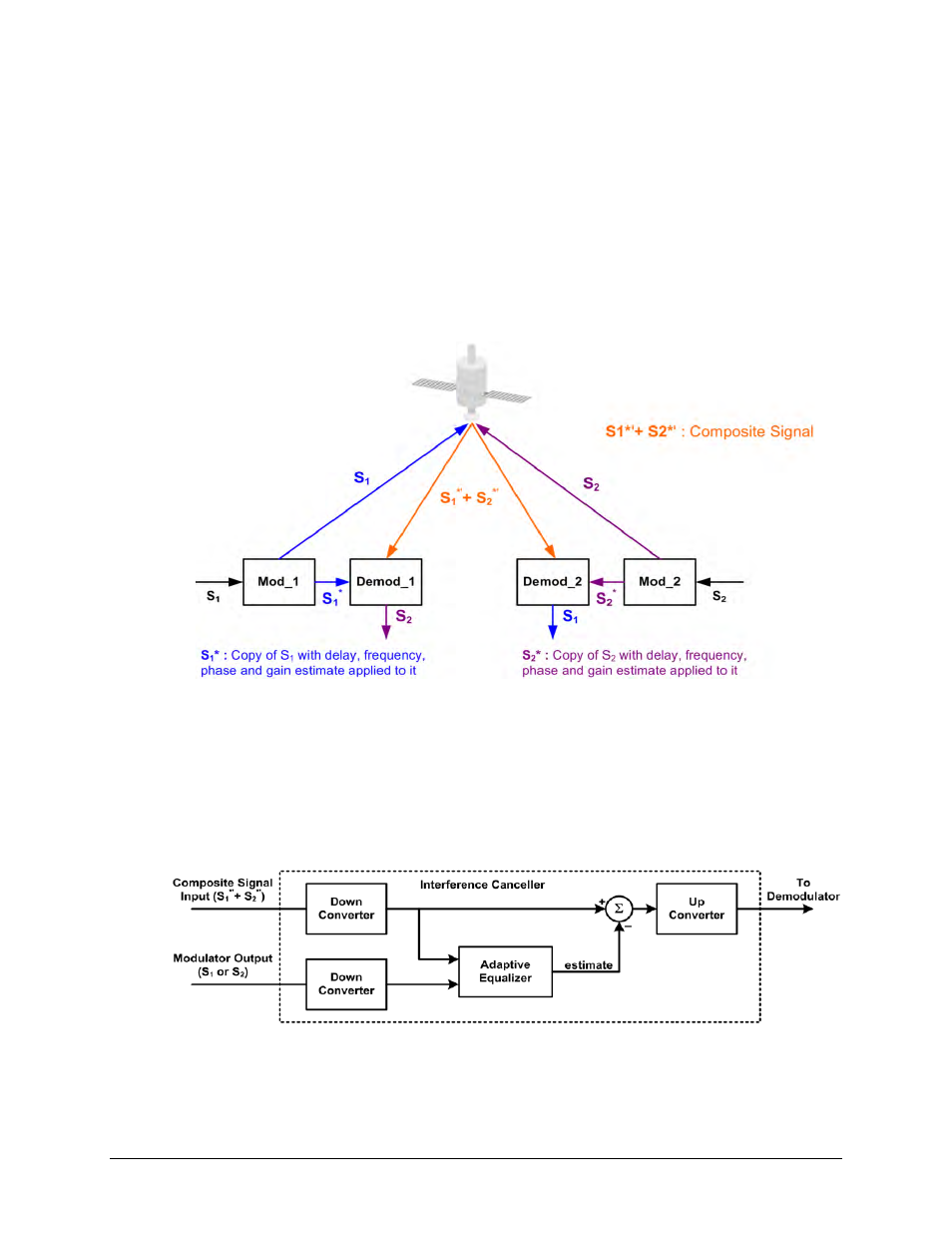Comtech EF Data CDM-625A User Manual
Page 614

CDM-625A Advanced Satellite Modem
MN-CDM625A
Appendix F
Revision 3
F–8
locally, it is possible to estimate and remove its influence prior to demodulation of the data
transmitted from the remote location.
For the DoubleTalk Carrier-in-Carrier cancellation, it is necessary to provide each demodulator
with a copy of its local modulator’s output.
Referring to Figure F-5: Modem 1 and Modem 2 transmit signals S1 and S2 respectively. The
satellite receives, translates, and retransmits the composite signal. The downlink signals S1* and
S2*, received at Modem 1 and Modem 2 differ from the transmit signals primarily in terms of
phase, frequency, and delay offsets.
Figure F-5. DoubleTalk Carrier-in-Carrier Signals
Referring to Figure F-6: For round trip delay estimation, a search algorithm is utilized that
correlates the received satellite signal to a stored copy of the local modulator’s transmitted
signal. The interference cancellation algorithm uses the composite signal and the local copy of
S1 to estimate the necessary parameters of scaling (complex gain/phase), delay offset and
frequency offset. The algorithm continuously tracks changes in these parameters as they are
generally time-varying in a satellite link.
Figure F-6. Carrier-in-Carrier Signal Processing Block Diagram
The resulting estimate of the unwanted interfering signal is then subtracted from the composite
signal. In practical applications, the estimate of the unwanted signal can be extremely accurate.